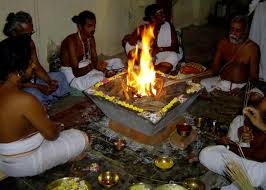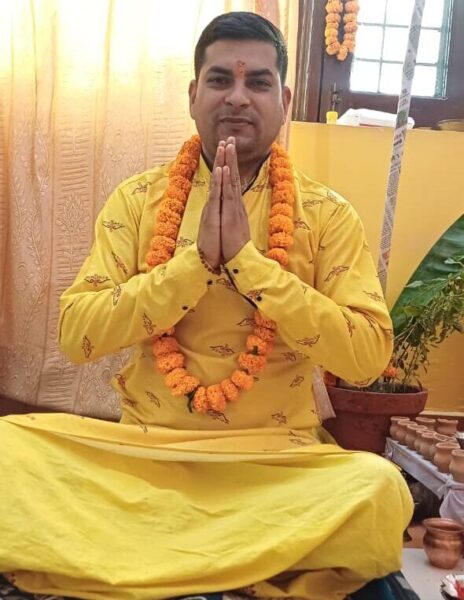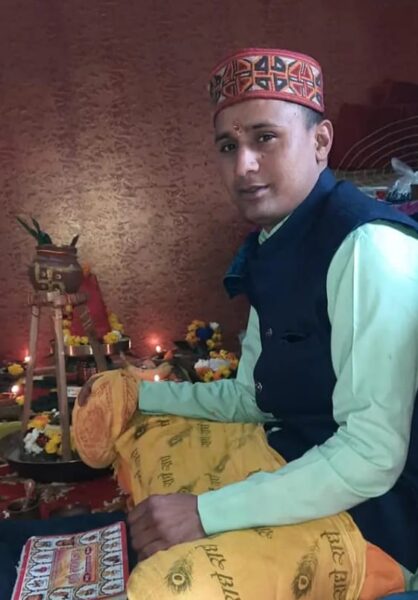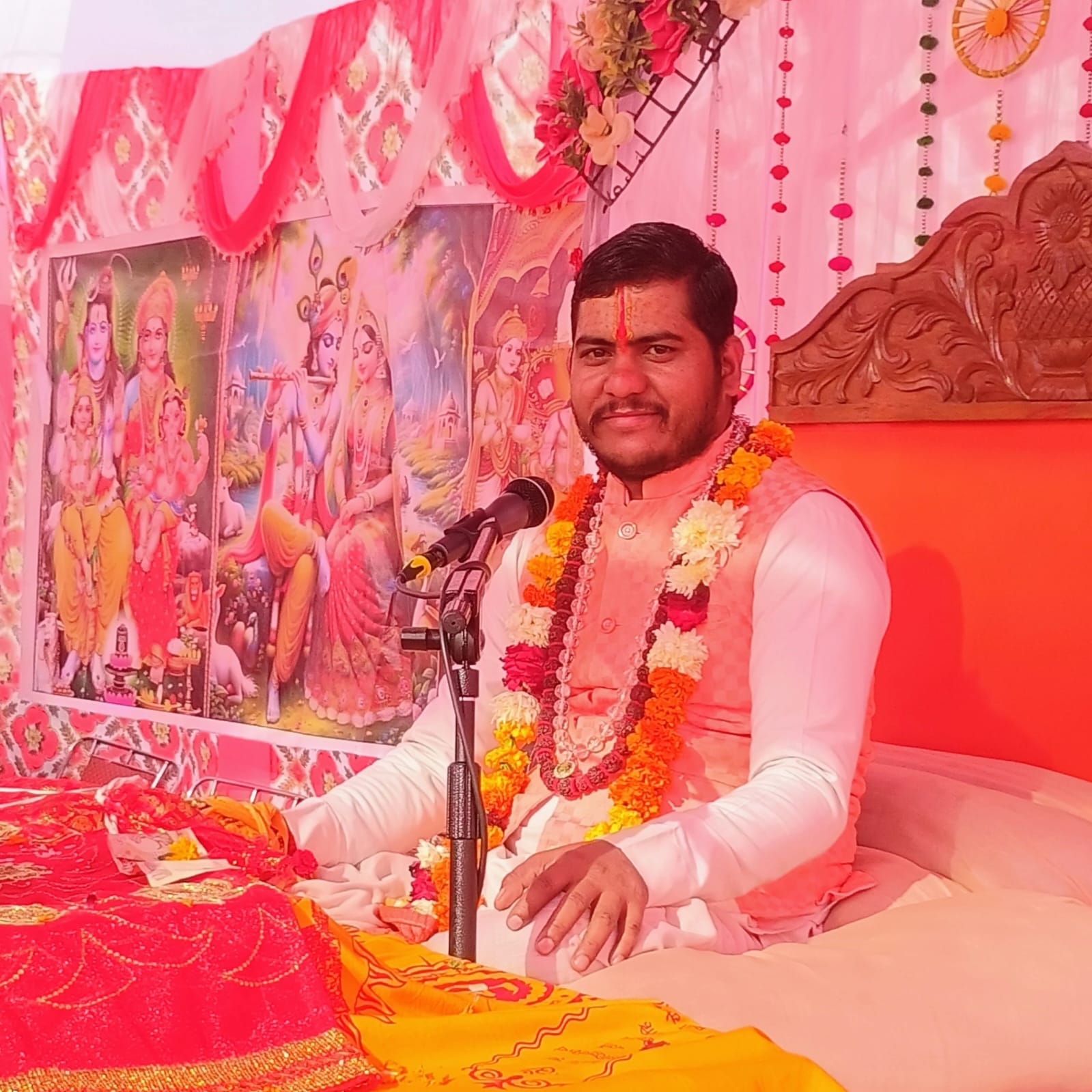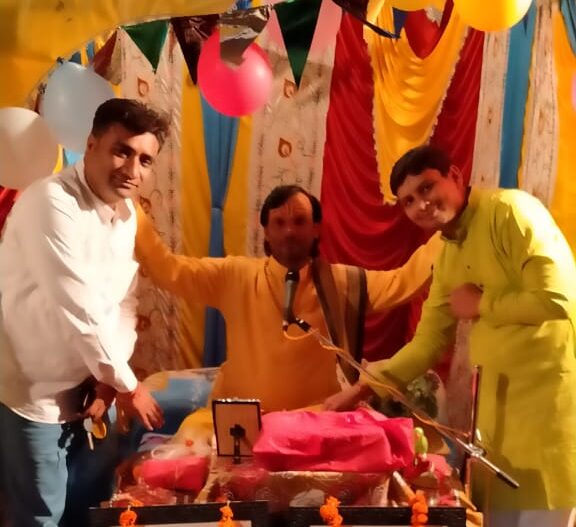Mahamrityunjaya Jaap Pooja is a powerful and ancient Vedic prayer dedicated to Lord Shiva, specifically invoking the Mahamrityunjaya Mantra—also known as the Death Conquering Mantra. This mantra is one of the most sacred and revered in Hinduism, believed to possess the ability to ward off untimely death, cure ailments, remove negative energies, and promote long life and prosperity.
The Mahamrityunjaya Mantra is believed to have a transformative effect on an individual’s spiritual, mental, and physical well-being. It is often chanted for protection, healing, and peace, both for the individual chanting it and for their family and loved ones.
Mahamrityunjaya Mantra:
The Mahamrityunjaya Mantra is composed of the following Sanskrit verses:
ॐ त्र्यम्बकं यजामहे सुगन्धिं पुष्टिवर्धनम्।
उर्वारुकमिव बन्धनान्मृत्योर्मुक्षीय माऽमृतात्॥
Om Tryambakam Yajamahe
Sugandhim Pushtivardhanam
Urvarukamiva Bandhanan
Mrityor Mukshiya Maamritat
Translation:
“We worship the three-eyed one (Lord Shiva),
who is fragrant and nourishes all beings.
May he liberate us from the bondage of death
and grant us immortality.”
Significance of the Mahamrityunjaya Mantra:
Conquer Death: The primary purpose of the Mahamrityunjaya Mantra is to overcome death, removing the fear of untimely or premature death. It is also said to help in attaining moksha (liberation) and a peaceful afterlife.
Health and Healing: Chanting this mantra is believed to have curative powers, especially in cases of chronic diseases and health conditions. It is known to purify the body and mind, promoting physical and mental well-being.
Protection from Negative Energies: It protects the chanter from negative influences, evil spirits, black magic, and other harmful energies. It acts as a shield, safeguarding the individual from misfortune.
Longevity and Prosperity: It is said to bless the devotee with longevity, wealth, and prosperity by removing obstacles and bringing peace to their life.
Spiritual Growth: Chanting the mantra with devotion helps in spiritual progress, deepening one’s connection to Lord Shiva and the divine. It is believed to purify one’s mind and soul, leading to higher levels of consciousness.
Mahamrityunjaya Jaap Pooja Process:
Performing the Mahamrityunjaya Jaap Pooja requires sincerity, dedication, and a peaceful environment. It can be performed individually or with the help of a priest. Here’s a step-by-step guide to the Mahamrityunjaya Jaap Pooja:
Preparation for the Pooja:
- Choose an Auspicious Day: The best time to perform this pooja is on Mondays (as it is the day dedicated to Lord Shiva), during Pradosh Vrat, or during the Maha Shivaratri festival. You can also choose to do it during Amavasya or any other spiritually significant day.
- Create a Sacred Space: The pooja should be done in a clean, calm, and sacred space. It is ideal to perform the pooja in front of an idol or image of Lord Shiva. A clean cloth should be spread on the ground or an altar.
- Gather Required Items: You will need a Shiva Lingam (or a picture of Lord Shiva), incense sticks, a lamp (preferably ghee lamp), flowers, fruits, water, and bel leaves (leaves of the Bael tree, which are sacred to Lord Shiva). Also, a jaap mala (prayer beads) or rudraksha mala is recommended for chanting the mantra.
Starting the Pooja:
- Begin the pooja by lighting the lamp and incense, and offering flowers to Lord Shiva’s idol or picture.
- Offer a glass of water and fruits to Lord Shiva, symbolizing purity, nourishment, and gratitude.
- If you are using a Shiva Lingam, you can perform Abhishekam (ritualistic bathing) of the Shiva Lingam with water, milk, honey, or ghee while chanting the mantra.
Reciting the Mahamrityunjaya Mantra:
- Start reciting the Mahamrityunjaya Mantra with full devotion. You can chant the mantra using a jaap mala (prayer beads) to maintain a count. The ideal number of repetitions for the Mahamrityunjaya Jaap is 108, but you can do more, such as 1,008 or 10,008 repetitions, depending on your time and dedication.
- Chant the mantra slowly and clearly, focusing on its meaning and the power it holds. Each time you finish one round of the mala, offer gratitude to Lord Shiva.
Prayers for Health, Protection, and Long Life:
- After chanting, offer additional prayers, asking for the protection of your loved ones, for healing from any illness or ailment, and for peace and prosperity in your life.
- You can also recite the Rudrashtakshari Mantra (another prayer dedicated to Lord Shiva) for added benefit.
Concluding the Pooja:
- After completing the chanting, thank Lord Shiva for his blessings and offer a final prayer for the well-being and prosperity of yourself and your family.
- You can distribute the offerings like fruits, flowers, and prasad (holy food) to family members or anyone in need as an act of sharing divine blessings.
- Complete the pooja by closing the ritual with a prayer of gratitude to the divine.
Number of Jaaps and Their Benefits:
The effectiveness of the Mahamrityunjaya Jaap increases with the number of repetitions of the mantra. Some common practices include:
- 1 Round (108 times): The basic, common number of repetitions, which is usually sufficient for daily chanting or a short ritual.
- 11,000 or 100,000 times: Some people perform extended Mahamrityunjaya Jaap over days or weeks, where they aim to complete 11,000 or 100,000 repetitions, especially during a spiritual retreat or a family ritual.
Benefits of Mahamrityunjaya Jaap Pooja:
Protection Against Untimely Death: The most important benefit of the Mahamrityunjaya Jaap is to invoke protection from untimely death and ensure that the individual is shielded from fatal accidents, illnesses, and mishaps.
Healing and Health: It is known to have curative effects on various ailments, chronic diseases, and health problems. Many people who are ill or undergoing treatment for serious health conditions perform the pooja to seek Lord Shiva’s healing powers.
Peace and Prosperity: By invoking Lord Shiva’s blessings, the mantra helps bring peace, prosperity, and success into one’s life. It is particularly helpful for overcoming challenges and obstacles in various aspects of life.
Spiritual Growth: The Mahamrityunjaya Mantra purifies the mind, body, and soul. It is also said to remove negative energies and enhance spiritual awareness, leading to greater enlightenment and inner peace.
Long Life: One of the primary benefits of chanting the Mahamrityunjaya Mantra is the blessing of longevity, ensuring a long, healthy, and fruitful life.
Mental Peace and Stability: Chanting this mantra can calm the mind, reduce stress, and help achieve emotional balance.
Conclusion:
The Mahamrityunjaya Jaap Pooja is a profound and powerful ritual that invokes Lord Shiva’s grace to protect, heal, and bless an individual. It is a form of divine intervention in the face of life’s difficulties, especially when it comes to matters of health, longevity, and protection from untimely death. Performing this pooja with full faith, devotion, and understanding can lead to significant spiritual and material benefits for both the person performing it and their family.
